#this also applies in U.K.
Text
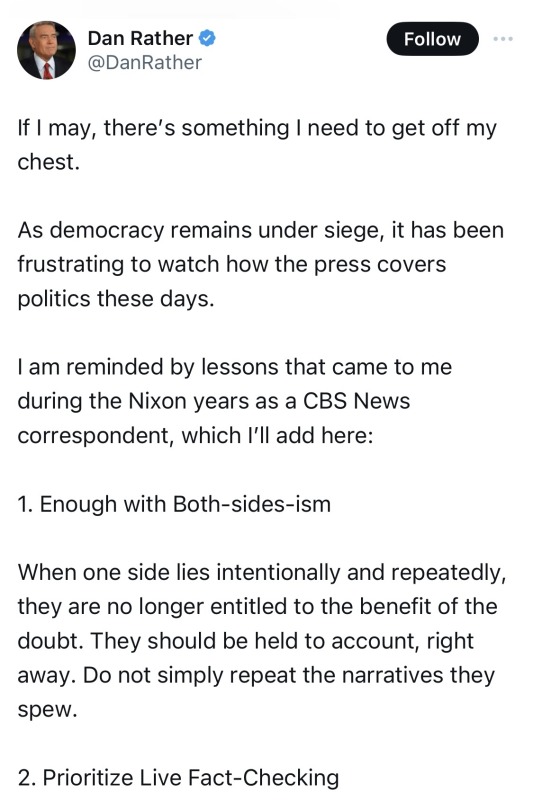

#us politics#dan rather#this also applies in U.K.#stop telling me the Tories and Labour are the same#they aren’t and we need to be a grown up#no party is going to be perfect for you or anyone
1K notes
·
View notes
Text
me trying to work out if getting a 2:1 from the top university in your country counts as an ‘outstanding academic record’ for masters degree admissions 🤔
#i mean this question totally genuinely bc I don’t even qualify for consideration for some masters programs at my university#by nature of me having no chance of getting a first lol#but it’s also the hardest uni in the country to get a first in probably 🤣#which is funny to me#i mean on paper the universities I’m applying for are all lower in the rankings than my current uni but that doesn’t mean as much#as it should#(oh not bc I’m selling myself short they’re all top unis I just want to study abroad)#i am still applying to one program at my current uni thoigh but masters in the#U.K. are highway robbery so like … no#i am not paying £22k a year
0 notes
Text
Bₑᵢₙg ₐ ₛₚᵢdₑᵣ Gₒₜₕ ₐₙd dₐₜᵢₙg ₕₒbᵢₑ Bᵣₒwₙ
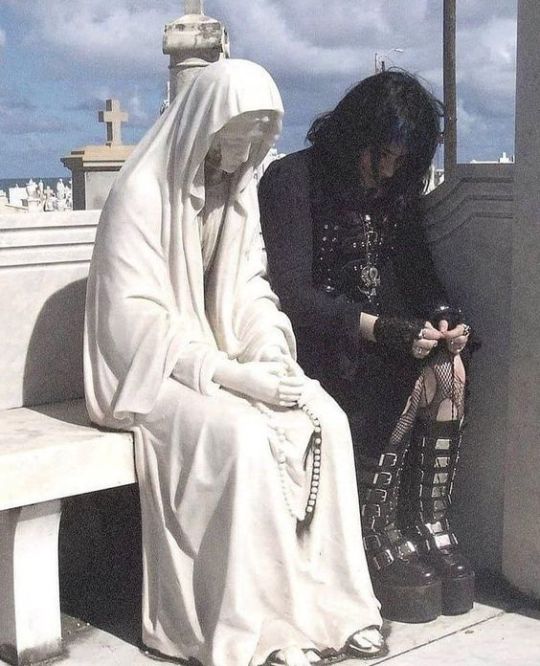

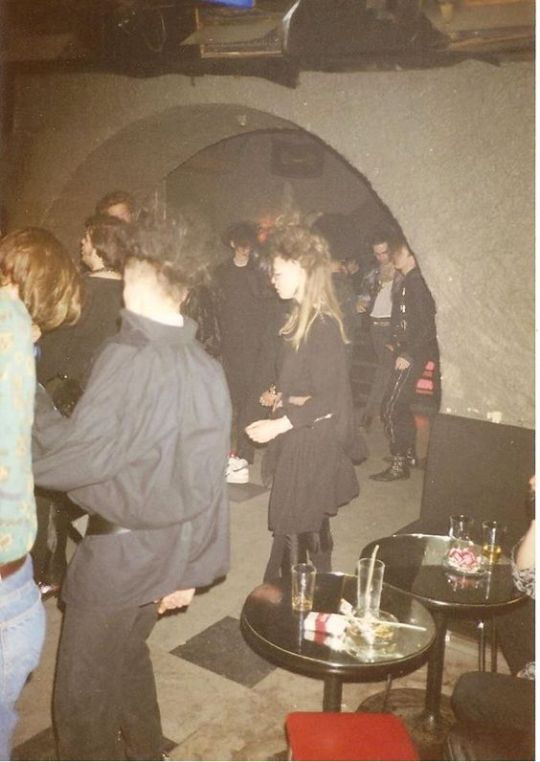
ᴘᴀɪʀɪɴɢ: ꜱᴘɪᴅᴇʀ ᴘᴜɴᴋ/ʜᴏʙɪᴇ ʙʀᴏᴡɴ x ꜰᴇᴍ! ꜱᴘɪᴅᴇʀ ɢᴏᴛʜ! ʀᴇᴀᴅᴇʀ
Tw: goth and punk culture, mentions of religion, kissing, couples doing couple stuff.
A/N: I needed to refresh my memory on some things, so I looked up like two things. I hope you like this.
Masterlist

You're a Spider woman from Earth- 666 (See what I did there), just like every Spider Man and Woman, you got bitten by a radioactive spider and you had then become Spider Woman, also known as Spider Goth.
Even before you were a Spider Woman, you were a Goth, since you were younger, you had a huge interest in the Goth culture and now you were a full goth, plus Spider Woman.
Not long after, you were a part of the Spider Society, you were invited in by Miguel and that's how you met your boyfriend, Spider Punk, also known as Hobert/Hobie Brown.
Hobie already had an interest in you as soon as he saw you, in your Spider Goth suit, also when he heard your name 'Spider Goth' it was obvious to him that you were a goth in and out of your suit.
He had heard of Goths and how they were somewhat similar to Punks. You and Hobie got a long from the start, then you both began to date. You dated in secret since you didn't like that much attention. Specially being from two different universes and stuff.
You and your boyfriend share a lot in common, you both liked music, dark aesthetic and had almost the same beliefs.
Since you wear makeup under your mask, Hobie is impressed by it. He likes how your makeup goes against beauty standards. He liked how different it is.
If you want to experiment on him, he'll let you, what he really liked is when you apply eyeliner on his waterline and proceed to make the pencil liner messy around his eye. He also wouldn't mind wearing black lipstick.
Also, if one of your favorite colors is Pink or any kind of soft color, Hobie isn't the kind of person to tell you that 'You're not a real Goth' for liking pink, he knows that being a goth/punk is more than just style. If anyone tells that you're not a goth for liking pink or any other non dark color. They're getting their ass chewed by him. (Also, If you're a goth who liked pink, you're still a goth :) )
He is a fan of your hair, if you have a tendency to dye it and style it. He has seen the many times you had changed your hair color and how you'd style it. If you want to cute your hair or try a new look, he'd help you.
You both have similar music tastes, but also share other kinds of music with one another. You really got him into The Cure, Joy Division and Los Prisioneros. Hobie got you into Sex Pistols, The Clash, and U.K. Subs. You and him had made a mixtape together in which you listen for hours and hours.
One thing that Hobie noticed was how you'd wear a Rosary and an Ankh. When he asked about it, you explained that the rosary represents the rejection of conservatism and is a way to mock the fakeness of religion (I think). As for the Ankh, you told him what the symbol means. Which means the Symbol of Life. You also wore them because they looked cool to wear.
When you both have nothing to do at Headquarters, you'll both go to an under ground Goth Club from your universe. Hobie has been to goth clubs before back in his universe, but he seems to like the clubs he goes with you. That's were he met your other goth friends.
Since you're both a private couple, you're not a fan of PDA, so you do that lovy dovy stuff alone together. You'll give each other looks and hold each other's pinkies in public, but in private, you'll be smooching and cuddling for hours.
When it comes to a mission, if you get hurt or nearly die, Hobie is worried AF. He doesn't care if you both are being watched by the others, he'll pull you into a tight hug and asks if you're okay. He could not lose you too, he had already began to love you more than anything.

#spider punk x reader#spider punk x you#spider punk x y/n#hobie brown x reader#hobie brown x you#hobie brown x y/n#hobie brown x goth reader#hobie brown x fem reader#hobie brown x spider woman reader#hobie brown fic#female reader#female y/n#goth reader#goth y/n#spider woman reader#spider woman y/n#aphrodite's writing#aphrodite's headcanons
517 notes
·
View notes
Text
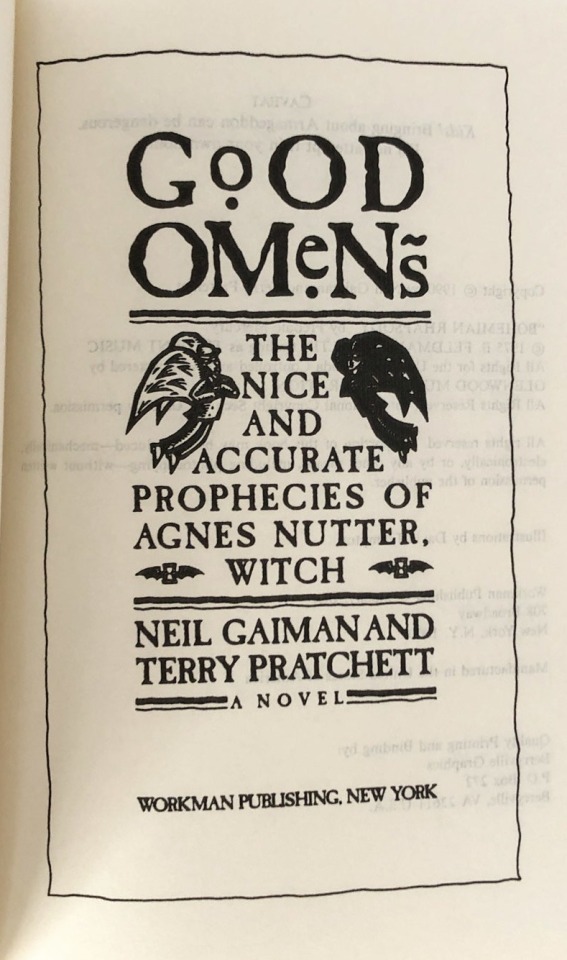
Can you believe that the first ever depictions of Aziraphale and Crowley and the rest of the Good Omens ensamble where not for the TV series nor even for the cover in the U.K. or USA, but the first ever depictions were done by David Frampton inside the US edition published by Workman in 1990?


Yes, these guys right here were the original Aziraphale and Crowley.
David Frampton has been an illustrator for nearly 30 years and has been especially attracted to doing illustrations for children's books. He has also been the author and illustrator of a collection of children's stories and author/illustrator of a book based on a poem by Lawrence Ferlinghetti.
His method of illustration is always color woodcut - simple, in his self imposed limit of four colors, but complex in the planning and execution of the narrative images. Even so, his work often demonstrates the beautiful drama of light and shadow without the need of colors.
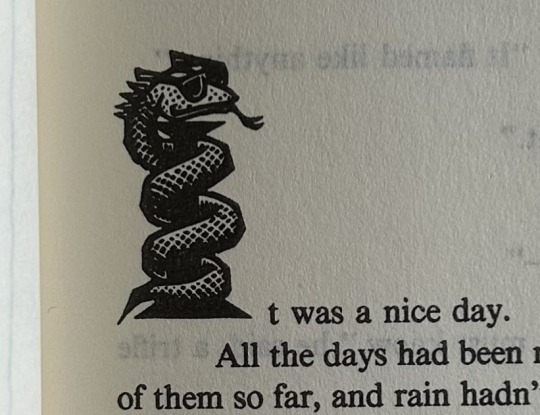
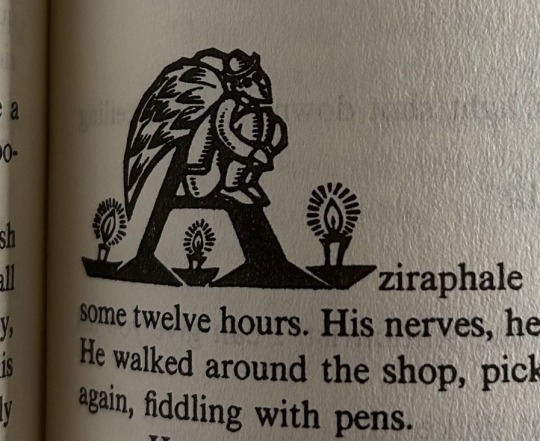
In an interview he said:
Often when I describe the process to someone and they come to realize just how involved and time consuming the process is, they inevitably ask,"Couldn't you get the job done faster and easier with paint or crayons?" The answer is "yes," but it's not as much fun. I just like doing woodcuts. When you look at the finished print it has a certain look, a look that says, "This picture was done by hand.'" You can see the process in the picture itself. You can see that someone took a flat piece of wood and carved a picture on it. You can see that paint was applied to that surface and then that surface was pressed against a piece of paper.
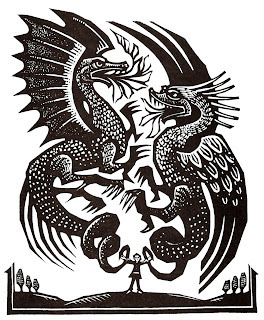
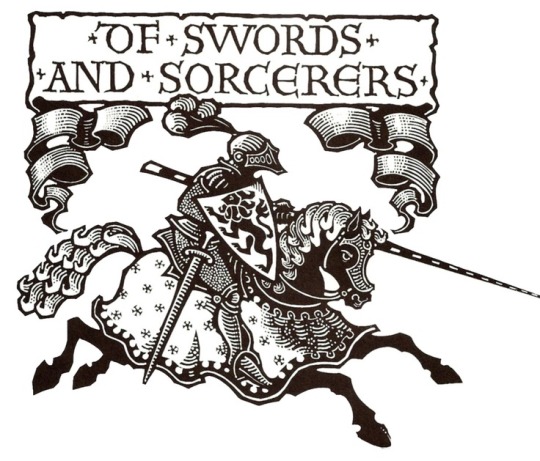
Frampton has illustrated a number of various books on folk tales, mythology, legends, and such. He illustrated an album cover for the British rock group Jethro Tull ("Stand Up").

Frampton studied art at the Rhode Island School of Design.
So whenever you see those little illustrations, think about the work that went into each of them because they’re more than that, they’re woodcuts specially designed for Good Omens.


#good omens#crowley#ineffable husbands#neil gaiman#aziraphale#terry pratchett#good omens fun facts#david frampton#good omens woodcuts#good omens book#art
51 notes
·
View notes
Text

“Doctor Who” star Jodie Whittaker will lead a short film fund aimed at championing female and non-binary filmmakers.
The Empower fund, a community-led initiative backed by Primetime, a global vetted platform to help the industry find and hire more women above and below the line behind the camera, and Bournemouth Film School, was launched at the Cannes film market. It aims to remove the barriers of access to finance and star power that restrict underrepresented filmmakers. The fund will focus on championing female and non-binary filmmakers and grant them access to a minimum of a £10,000 ($12,430) grant in addition to other perks.
Whittaker will feature in or voice the final film, with the intention of increasing the visibility of the project and the filmmaker selected. The actor will also collaborate to create a prompt for filmmakers as a starting point for a character or story she would like to explore. There will be a focus on accessibility and reaching filmmakers who might not traditionally put themselves forward for grant funding. A brief will then be distributed and U.K.-based female and non-binary filmmakers will be encouraged to submit their short film project for consideration. Five projects will be shortlisted via an industry jury, and from that Whittaker will select the live action or animation film she would like to take part in or voice.
The fund will be accessible for any female or non-binary filmmaker who has directed at least three short films, one of which must have screened at a BAFTA or Academy qualifying film festival. The teams applying for funding must adhere to BFI diversity standards in order be considered.
Primetime was launched by actor Victoria Emslie (“Downton Abbey”) at Cannes in 2019 and the platform was relaunched earlier this year. It has members in some 70 countries, including multi-BAFTA, Emmy and Academy Award winners and nominees. Bournemouth Film School, at Arts University Bournemouth, has partnered with Primetime as part of its Funding Futures platform, which houses several funding schemes to support filmmakers, creatives, artists and innovators.
Whittaker said: “Being a part of this exciting journey and having the opportunity to work with talented new voices and creatives is an absolute joy. I can’t wait to work alongside Victoria and the amazing teams at Primetime and Funding Futures.”
Emslie added: “Community-driven change is one of the single most powerful and actionable ways to shake up traditional funding pipelines and the projects that receive finance. By paying in for each other with this focused intentionality, the rise to the top is navigated together as a collective.”
Jonathan Carr, director of the Bournemouth Film School, said: “The success of our groundbreaking Funding Futures schemes hinges on the strength of our partnerships. Our key focus is to encourage positive change within a sustainable industry. We’re delighted to play a pivotal role with Primetime to create a funding opportunity to truly champion inclusivity.”
Will Shutt from Funding Futures said: “The Empower fund hopes to create a space to make a film with filmmakers that reflects the core values of Primetime’s mission. I’m excited to see the outcome of connecting talented filmmakers with Jodie and the award. It can only lead to something special.”
Bournemouth Film School is hosting a Funding Futures showcase event at BFI Southbank on June 16 to unveil the Empower fund.
80 notes
·
View notes
Text
Private Doctors in the U.K. Can No Longer Prescribe Puberty Blockers to New Patients
The “emergency ban” is an expansion of the freeze on blockers instituted by the National Health Service (NHS) in March.
Puberty blockers are now effectively banned in the United Kingdom, after the Department of Health and Social Care released an “emergency ban” on Wednesday that restricts the medicine’s use specifically for transgender youth.
The U.K. government’s press release regarding the new legislation stated that “no new patients under 18 will be prescribed” gonadotropin-releasing hormone (GnRH) analogues, commonly known as puberty blockers, if that medicine would be used to treat gender dysphoria. The ban is currently set to last from June 3 to September 3, 2024, taking effect just five days after it was issued. It will apply to residents of England, Wales, and Scotland, but not Northern Ireland. An accompanying piece of legislation, also issued May 29, established GnRH analogues as a Schedule 2 drug under U.K. law, meaning it may only be prescribed under certain circumstances.
The so-called “emergency ban” specifically pertains to private prescribers in the U.K. and Switzerland, expanding a freeze on blockers instituted by the National Health Service (NHS) in March. Young people who have already received a prescription for dysphoria-related puberty blockers may continue to receive care if they meet certain criteria, such as proving their identity with a U.K. birth certificate or identification card.
[...]
LGBTQ+ advocates and organizations in the U.K. condemned the new ban this week, accusing the Conservatives — including outspoken anti-trans Prime Minister Rishi Sunak — of jeopardizing the health and safety of trans children. Representatives for the U.K.-based online gender clinic GenderGP wrote they were “shocked by the [government’s] attitude and behavior” in a statement this week.
“We know that the interference in medicine and healthcare by the government will lead to serious harm for millions of patients and even death including those within the trans community,” clinic representatives wrote. “We remain committed to working with the government and the community to find solutions to prevent harm wherever it exists.”
11 notes
·
View notes
Text
The Puzzle Piece Problem
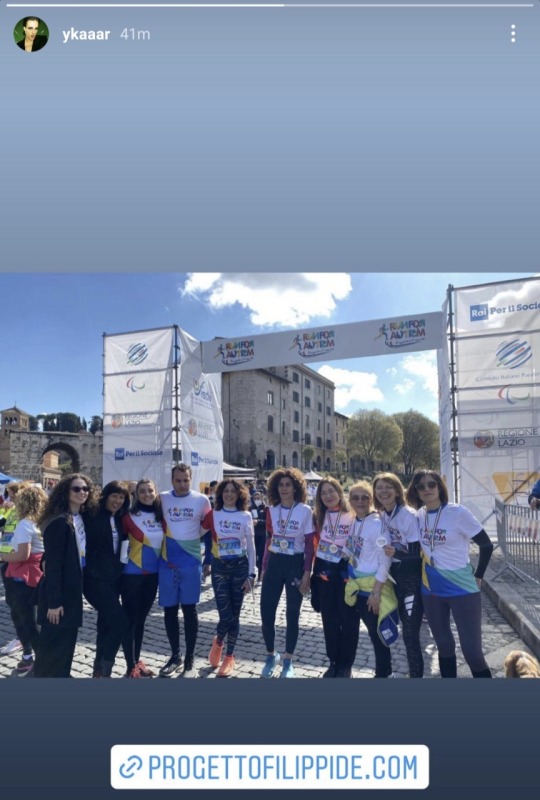
We have to talk about it again. I started this conversation a year ago, when Damiano posted an image of his mom at the Run for Autism. Progetto Filippide is a highly respected organization that does meaningful work for autism and other disabilities. However this iconography is insulting as fuck and seeing Damiano rep it personally in 2023 makes me sick.

Previously, I also expressed concern about the language choices on Progetto Filippide's website. This post is going to focus on the puzzle piece iconography in general, but I do stand by those concerns.
"Ritardo mentale" (mental retardation) which I've since learned is also offensive in Italian when used in this context. "Riabilitativo" (rehabilitation) of autism is not possible. Referring to autism as "diagnosi certificata" (certified) or "conclamata sindrome autistica"(full blown autistic syndrome) excludes people who can't afford or can't access a diagnosis. Also autistics and allistics aren't "affrontando le stesse fatiche, condividendo le stesse emozioni" (facing the same hardships, sharing the same emotions) because one of us is neurodivergent. Sameness isn't the goal.
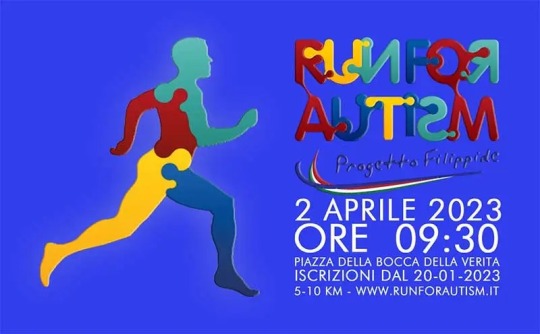
Here is a closer look at the graphic. As you can see, the text and the logo are made out of puzzle pieces. The majority of the autistic community find puzzle pieces as a symbol for autism offensive and many even find it hateful. We have proudly used our own emblem since 2005, a rainbow infinity symbol for neurodiversity.
"For many years adults have openly, publicly discussed their desires for autism awareness to shift to an approach aimed at creating acceptance for us in society. Continuing to ignore our wishes, to use symbols which may remind us of our discrimination in society or that people sometimes do kill us because of our autism, IS disrespectful."
Paula Jessop, All Together Autism (New Zealand)

The original puzzle piece logo was created by Gerald Gasson for the National Autism Society (U.K.) in 1963. The crying child represents the tragedy of autism and the shape represents how "puzzling" Gasson found our condition. To avoid the association, the NAS have since changed their name, scrapped the logo (in 1999), and the whole site is rainbow (like our emblem). That's how embarrassing it is to have used puzzle pieces for autism.

The depiction of autism as a tragedy and sickness resulted in decades of efforts to cure and prevent it. Horrific abuse was suffered at the hands of caregivers, therapists, and physicians who treated autism like a cancer. The puzzle piece itself represents the deficit lens through which autistic people are viewed. We have a piece of the puzzle. We are a fraction of of a person. So the implication is that not being autistic makes you whole. Not being autistic makes you normal. Therefore, autism is inherently inferior. When an autistic person's behavior is measured as good (allistic) or bad (autistic), it's just a measure of how well they can conceal themselves and traits allistics might find "puzzling."

While the NAS invented it, Autism Speaks (U.S.) made the puzzle piece a global symbol through giant, heinous campaigns that seek to silence and eradicate autistic people. Autism Speaks was founded to help families of autistics manage their child, rather than help the child manage their neurodivergence. The most infamous campaigns are Autism Every Day, (> 13 mins long so I've edited together a few clips) and I Am Autism.
youtube
Even worse than these campaigns is Autism Speaks' much beloved Applied Behavioral Analysis. It began with Dr. O. Ivaar Lovaas using electroshock on intellectually disabled patients to stop self harm. The issue with compliance training, is that non-verbal folks communicate through their behavior. Understanding should be the first thing you reach for, and ABA the last since the use of that therapy makes an autistic person 86% more likely to develop PTSD.
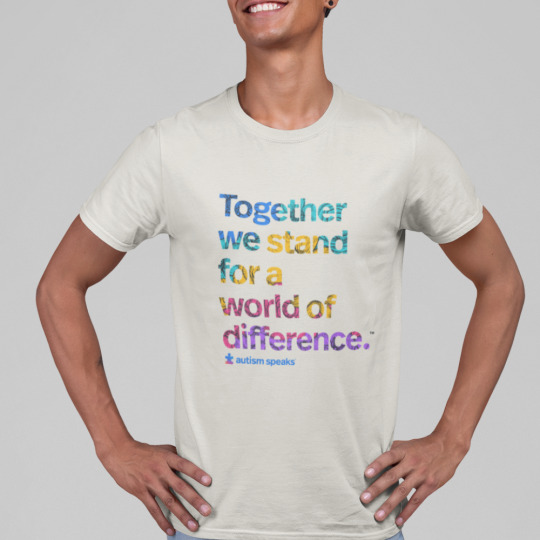
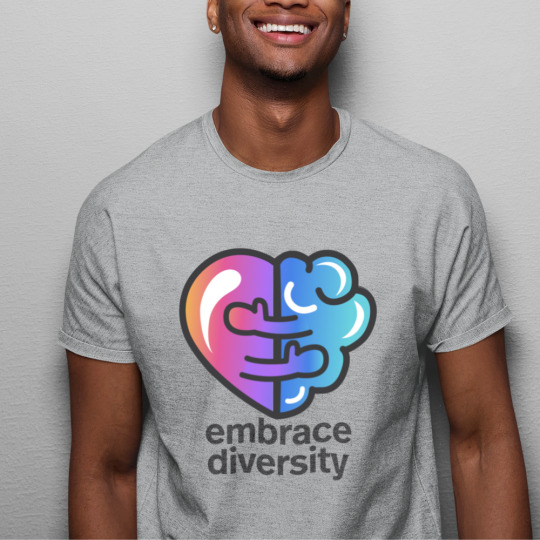
I could keep going, but we've established that Autism Speaks is a monster. Yet, the only puzzle pieces we see in their merchandise is their logo. The puzzle piece is their entire brand, their legacy, and Autism Speaks is limiting exposure. Two of the shittest autism organizations in the history of man (the creators of the puzzle piece!!) have very intentionally moved away from that iconography and towards our chosen emblem.
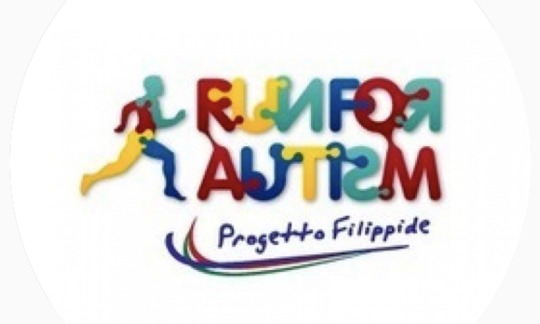
So what the fuck is this?? No, the fact that its a complete puzzle doesn't negate the insult. I am not a puzzle at all! The fact that they think that comparison is fitting says something about how Progetto Filippide view its clientele. Sorry, not sorry.
Autistic people look like puzzles because we're punished for being neurodivergent. We're forced to take ourselves apart, do some curating, and put ourselves back together in a way that appears allistic, but that is not who we are. My autism is not a puzzle. Your society is a puzzle.

This is what neurodivergence is: the potential for an infinite number of unique ways to process the world around us. If you want to support autism in particular, use the gold infinity sign, but either is great! Do you see the giant chasm between how the world views us vs. how we view ourselves?
"Neurodiversity describes the idea that people experience and interact with the world around them in many different ways; there is no one "right" way of thinking, learning, and behaving, and differences are not viewed as deficits."
Dr. Nicole Braumer & Julia Frueh

When you say "well its a great organization" do you think this is what happens? "I'm sure he didn't mean it like that." "If he'd known, he wouldn't have worn it." No. they're still wearing puzzle piece shirts.
Autistics spend their childhoods and adolescence surrounded by people who’d like them to shut up. We’re called annoying, weird, unlikable. We are told nobody wants to be our friend, or likes us, or wants to hear what we have to say. Not only is it really hard for autistics to speak up for themselves because of this, but we’re also waiting in fear of an allistic person who says things the right way, coming along and usurping the conversation. So just listen please.
I won't be debating or defending anything. Feel free to be supportive or ask a question. Nicely.
#actually neurodivergent#actually autistic#actually autism#actuallyautistic#autism awareness#autism#TW: Autism Speaks/ablism
69 notes
·
View notes
Photo



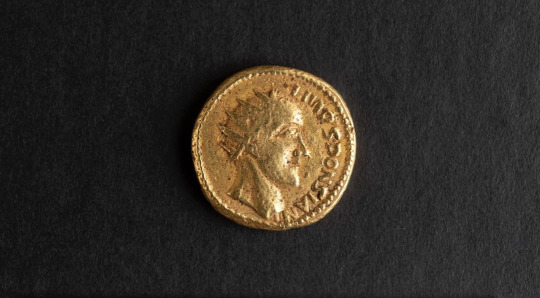
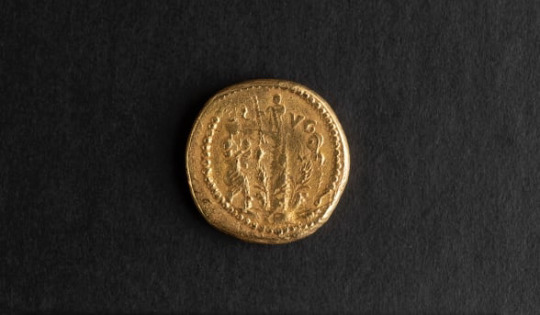

Ancient Roman coins thought to be fakes now authenticated
A new analysis of several Roman coins unearthed in 1713—long thought to be forgeries—suggests that they are authentic, providing evidence that the leader portrayed on one of the coins was indeed in power during the 260s CE. Paul Pearson of University College London, U.K., and colleagues present these findings in PLOS ONE.
For much of ancient Roman history, Roman mints produced coins featuring portraits of current emperors. In 1713, a group of such coins was allegedly discovered in Transylvania, some of them featuring a portrait labeled with the name "Sponsian," although there are no other historical records that a Roman emperor named Sponsian ever existed.
While the Transylvanian coins follow the general style of mid-third century Roman coins, they diverge in certain stylistic characteristics and in how they were manufactured, leading many experts to dismiss them as forgeries created to sell to collectors. However, the coins are also uncharacteristic of the forgeries that would have been of interest to past collectors. Additionally, in 1713, "Sponsian" was not yet known to be a name that had ever existed in ancient Rome.
To further investigate the Transylvanian coins' authenticity, Pearson and colleagues conducted a deeper assessment of the physical characteristics of four of the coins, including the Sponsian coin. They applied visible light microscopy, ultra-violet imaging, scanning electron microscopy, and reflection mode Fourier transform infra-red spectroscopy to the four coins and, for comparison, two undoubtedly authentic Roman gold coins.
The analysis revealed deep micro-abrasion patterns typically associated with coins that were in circulation for an extensive period of time. The researchers also analyzed earthen deposits on the coins, finding evidence that after extensive circulation, the coins were buried for a prolonged period before being exhumed. Together, the new evidence strongly suggests the coins are authentic.
Considering the historical record alongside the new evidence from the coins, the researchers suggest that Sponsian was an army commander in the Roman Province of Dacia during a period of military strife in the 260s CE.
Lead author of the paper, Paul N. Pearson of University College, London, adds, "Scientific analysis of these ultra-rare coins rescues the emperor Sponsian from obscurity. Our evidence suggests he ruled Roman Dacia, an isolated gold mining outpost, at a time when the empire was beset by civil wars and the borderlands were overrun by plundering invaders."
Curator of Numismatics at The Hunterian, Jesper Ericsson, adds, "This has been a really exciting project for The Hunterian. Not only do we hope that this encourages further debate about Sponsian as a historical figure, but also the investigation of coins relating to him held in other museums across Europe."
#Ancient Roman coins thought to be fakes now authenticated#coins#roman coins#ancient artifacts#archeology#archeolgst#history#history news#ancient history#ancient culture#ancient civilizations#roman empire#roman history#roman legion#emperor sponsian
167 notes
·
View notes
Text
This Moment to Arise: The Revisionary Genius of Beyoncé’s ‘Blackbird’
By Rob SheffieldMarch 29, 2024
'Cowboy Carter' highlight brings the White Album classic full circle
Beyoncé has so many audacious culture-clash triumphs all over Cowboy Carter. But one of the most stunning moments is also one of the simplest: her version of the Beatles classic “Blackbird.” Paul McCartney wrote the song in the summer of 1968, inspired by the American civil rights movement. All that history is right there in Beyoncé’s version. She keeps the folkie Paul guitar, complete with the squeaks, but adds her heavenly gospel-soul harmonies. What she does with the word “arise” is incredible in itself.
It’s a stroke of Beyoncé’s revisionary genius that brings the story of “Blackbird” full circle. She claims the song as if Paul McCartney wrote it for her. Because, in so many ways, he did.
Paul tells the story of writing it in his 2021 book The Lyrics. “At the time in 1968 when I was writing ‘Blackbird,’” he recalls, “I was very conscious of the terrible racial tensions in the U.S. The year before, 1967, had been a particularly bad year, but 1968 was even worse. The song was written only a few weeks after the assassination of Martin Luther King Jr. That imagery of the broken wings and the sunken eyes and the general longing for freedom is very much of its moment.”
Paul wrote this song as a dialogue with Black America; Bey’s “Blackbird” is part of that call-and-response, proof that the song always meant exactly what McCartney hoped it would mean. It’s one of the most profound and powerful Beatles covers ever, right up there with Aretha Franklin’s “The Long and Winding Road.”
Popular on Rolling Stone
“I had in mind a Black woman, rather than a bird,” Paul says of the song in the 1997 book Many Years From Now, by Barry Miles. “Those were the days of the civil rights movement, which all of us cared passionately about, so this was really a song from me to a Black woman, experiencing these problems in the States: ‘Let me encourage you to keep trying, to keep your faith, there is hope.’”
Editor’s picks
Paul was especially moved by the Little Rock Nine — a group of teenagers, the same age as so many Beatlemaniac fans, who caused a nationwide racist outrage in 1957 when they tried to enroll in an all-white high school in Little Rock, Arkansas. Gov. Orval Faubus called out the National Guard to block the kids from setting foot in the school. Writing “Blackbird” in the summer of 1968, with high-profile anti-Black violence in both the U.S. and the U.K., he turned that into the song. “As is often the case with my things, a veiling took place so rather than say ‘Black woman living in Little Rock’ and be very specific, she became a bird, became symbolic, so you could apply it to your particular problem.”
“Blackbird” is a song with a long history in Black music, from reggae (the Paragons’ gorgeous version from 1973) to jazz legends including Ramsey Lewis, Sarah Vaughn, and Cassandra Wilson. No song has a deeper dialogue between the Beatles and the Black America that gave them their voices. Anderson .Paak put his spin on “Blackbird” in 2013, years before he ended up contributing to Paul’s album McCartney 3 Imagined, with his funk remix of “When Winter Comes.” The Beatles’ sidekick Billy Preston, who plays with them all over the Get Back movie, gospelized it in 1972, as the flip side of his Number One hit “Will It Go Round in Circles.” His version is on the superb Ace Records anthology Come Together: Black America Sings the Beatles.
Beyoncé brings all that history to her version. There’s also a Paul-like playful humor in the way she makes a horse the star of her album cover. (Could Chardonneigh be the new Martha?) In other words, she is Macca Fierce.
But most of all, Bey’s version ties in mostdirectly to Sylvester’s disco version of “Blackbird” from 1979, the most outrageous and radical version ever. She evokes this song’s history in queer Black disco culture— connecting it to her whole Renaissance project. Sylvester was the first gay Black pop star who was out of the closet, as far as the public knew. Tragically, he also become one of the first stars to pass in the Eighties AIDs epidemic. But in 1979 he was back in San Francisco as a hometown hero, after breaking big nationwide. “Blackbird” is his falsetto-disco celebration from Living Proof, one of the Seventies’ greatest live albums. He was on top of the world: There was an official “Sylvester Day” in San Francisco, where he received the key to the city from the mayor, who happened to be Diane Feinstein. That night he headlined the War Memorial Opera House, and did the most beautiful “Blackbird” ever heard — until now.
Related
Sylvester claims “Blackbird” for himself and his community. He trades call-and-response vocals (“Y’all ready, girls?”) with his backup singers, eternal disco legends Martha Wash and Izora Rhodes, the Two Tons o’ Fun. (They later blew up as the Weather Girls, belting their classic “It’s Raining Men.”) When they sing “You were only waiting for this moment to arise,” you can feel the whole crowd rise to join them. They’re not hiding out in the shadows anymore. They’re spreading their wings. It’s their night to fly. This is their song, and their moment.
Hearing Beyoncé sing this song now evokes her Uncle Johnny, a member of the queer Black dance culture that Sylvester epitomized, and the guiding spirit of her love letter to that culture, Renaissance. (He died tragically in the same epidemic as Sylvester, 10 years later.) You can hear her “arise” connect with Sylvester’s “arise.” And you can hear her Uncle Johnny in both of them.
Beyoncé has always loved reclaiming rock & roll as Black female performance. It’s one of her artistic passions — check her mind-blowing versions of the Doors’ “Five to One,” Alanis Morissette’s “You Oughta Know,” and even Kings of Leon’s “Sex on Fire.” She turned the Yeah Yeah Yeahs into “Hold Up.” Long before Stevie Nicks had her grand 2010s comeback, Destiny’s Child got her back on MTV with “Bootylicious.” Most spectacularly, the Lemonade classic “Don’t Hurt Yourself” is Beyoncé channeling Memphis Minnie’s “When the Levee Breaks” through Led Zeppelin, with Jack White wailing on guitar. But “Blackbird” is different, because McCartney wrote the song explicitly about Southern Black women and their struggle through American racism in the 1960s.
The Bey/Paul connections go deep. Bey and Paul were spotted hanging out at Coachella a decade ago; they also worked out together at an L.A. gym. He was visibly having a great time at her 2011 New York residency. He saw the Renaissance World Tour in London last summer — a clip of his dancing went viral — and posed for a memorable photo with Jay-Z, lifting their champagne glasses to toast the Queen. On tour, Bey wore a custom Stella McCartney silver dress and leggings. As Stella said, “It is a life moment to dress someone as iconic and inspiring as Beyoncé — a visionary pioneer, disruptor, and artist who has worked tirelessly to make the world a better place.”
Paul haters might have questioned his sincerity about “Blackbird,” but that just means they weren’t listening. Because this song didn’t happen in a vacuum — it’s part of his lifelong engagement with Black music and Black culture. “Blackbird” was hardly his the only explicitly anti-racist statement on the White Album. “Ob-La-Di, Ob-La Da” is a ska ode to West Indian immigrant family life in England (“Desmond is a very Caribbean name,” he says in the Anthology book) at a time when the right-wing politician Enoch Powell was whipping up racist and anti-immigrant hysteria with his notorious “Rivers of Blood” speech in April 1968. That summer, with high-profile anti-Black violence in both the U.S. and the U.K., “Ob-La-Di, Ob-La Da” was a consciously provocative statement.
He lashed out at Powell even more directly months later in “Commonwealth Song,” which turned into “Get Back.” But in “Ob-La-Di, Ob-La-Da,” he made these Caribbean immigrants his embodiment of family values — and turned it into an unimpeachably wholesome kiddie singalong. The title phrase came from a Nigerian musician friend in London, the conga player Jimmy Scott. (He later died in suspicious circumstances after being imprisoned by U.K. customs officials.)
When Paul performed in Little Rock in 2016, he met for the first time with Thelma Mothershed Wair and Elizabeth Eckford, two of the Black women who incited so much racist controversy by trying to enter an all-white high school. Meeting these two heroes had a profound impact on him. “Incredible to meet two prisoners of the civil rights movement and inspiration for ‘Blackbird,’” Paul said at the time. “Way back in the Sixties, there was a lot of trouble going on over civil rights, particularly in Little Rock,” he told the crowd that night, introducing the song. “We would notice this on the news back in England. So it’s a really important place for us, because to me, this is where civil rights started.”
But “Blackbird” is also in the tradition of his songs about everyday women and their unseen struggles— “Eleanor Rigby” and “Lady Madonna” with the Beatles, “Another Day” and “Jennie Wren” and “Little Willow” solo. (His empathy for his female characters was always radically different from other male songwriters of his generation, to say the least.)
Bettye LaVette did one of the most emotionally cathartic versions in 2020, a gritty old-school R&B performance at 74, singing the lyrics in the first person. She felt a deep connection as soon as she heard it, saying, ‘‘I wonder if people know he’s talking about a Black woman?’” She made it the centerpiece of her 2020 album, Blackbirds,where all the other songs were popularized by Black women singers — Nina Simone, Billie Holiday, Ruth Brown. “It is about the road that I came across on,” she told the crowd at Farm Aid 2021. “This song was written by Mr. Paul McCartney. But it is about me, and them.”
The whole Cowboy Carter is Beyoncé using music as a map of American pop culture, from Willie and Dolly and Linda Martell to the Nancy Sinatra bass line, right up to the great moment when she starts singing the Beach Boys’ “Good Vibrations.” Since she knows absolutely everything, she might even be consciously evoking the short-lived 1970s sitcomCarter Country, about a Black sheriff coming to a redneck small town in Georgia, from the creators of “What’s Happening!!” and “Sanford & Son.” Never put anything past her. She takes the details seriously.
But as Bey knows full well, the Beatles’ biggest inspiration was always American R&B. As kids in Liverpool, they heard the blues and soul records brought over by U.S. sailors. As John said, “We’d been hearing funky Black music all our lives, while people across Britain and Europe had never heard of it.” But Liverpool had its own racist history. “I was very conscious Liverpool was a slave port,” Paul says in The Lyrics. “And also that it had the first Carribean community in England. So we met a lot of Black guys, particularly in the music world.”
From their earliest days, they played songs by Ray Charles, Smokey Robinson, the Shirelles, Little Willie John, the Marvelettes — always aspiring to live up to that spirit. On their early U.S. tours, they refused to allow segregation at their shows in the South. (McCartney, 1964: “There’s no segregation at concerts at England, and in fact if there was, we wouldn’t play ‘em, you know?”) “Rock & roll is Black,” John told Jet magazine in 1972. “I’ll never stop acknowledging it: Black music is my life.” For both Paul and Ringo, that connection remains at the heart of their music. When Ringo turned 80 a few years ago, he hosted his Big Birthday Special livestream to raise funds for Black Lives Matter. He sat at his drums and told the worldwide audience, “Let’s say it again: Black lives matter! Stand up and make your voice heard!”
Trending
That’s why it meant so much to McCartney — more than any of them — to hear how his African American peers responded. Aretha’s versions of his songs always meant the most to him, because she heard that same Black history in these songs. When he wrote “Let It Be,” he sent her a demo in hopes she’d record it, even though he knew she would sing rings around him. (Her “Let It Be” came out in January 1970 — months before the Beatles version.) She did “The Fool on the Hill,” another song inspired by the civil rights struggle — for years, when Paul did it live, he added a sample of Dr. King’s “I Have a Dream” speech. Most of all, Aretha claimed “The Long and Winding Road,” leaving all other versions (including McCartney’s) in the dust.
For Paul, as with the other Beatles, the connection to Black American music was deep, but it was especially important for him that it to be a two-way dialogue. Beyoncé’s “Blackbird” is one that really completes the song — a profound moment in her history, the Beatles’ history, and this timeless song’s history. In so many ways, “Blackbird” has always been waiting for this moment to arise. And Beyoncé makes the song rise higher than ever before.
Sent from my iPhone
#Spotify#Me thinking about#how this album#was created because#the CMAs treated#Beyonce like crap….#lemons into#the finest of lemonade.#😭🫶🏾✨#COWBOYCARTER#Cowboy carter#queen bey#act ii#act ii cowboy carter#beyonce#beyhive#renaissance world tour#16 carriages#cowboy carter#Beyonce#country music#cuntry#texas holdem#Youtube#Black music#black musicians#country#blackbird#the beatles#beatles
6 notes
·
View notes
Text
When Jessica Wade was invited to Buckingham Palace to receive the prestigious British Empire Medal, she stood out for being a young woman honored for her contributions to science.
Ironically, she was being honored for trying to change that.
The 33-year-old London-based physicist has become something of a phenomenon herself — both an irresistible force and immoveable object — in her very personal campaign to bring more girls to study and work in STEM (science, technology, engineering and mathematics).
Wade has written more than 1,600 Wikipedia entries for long-ignored women scientists, and she has firm beliefs on ideas on how to support girls interested in the field.

Wade gained notice when, still in her 20s, she began writing the Wikipedia biographies about women and minority scientists who never got their due — from employers, from other scientists, from the public.
As her Wikipedia entries climbed into the dozens, and then into the hundreds, she spoke and wrote more on gender equality in science. She won awards and medals and was cited by Jimmy Wales, the founder of Wikipedia.
However, not all of Wiki-world was happy with her. Several of her entries were deleted by other Wikimedians, as the most influential contributors and editors are called. She told TODAY.com that they said a handful of the women she wrote up were not all that well-known.
Wade said that’s right, that’s the problem: they should be better known.
One example was Clarice Phelps. Wade heard about the young African-American nuclear chemist, and wrote a Wikipedia bio describing her work on a team that discovered a new periodic-table element at the Oak Ridge National Laboratory.
The Phelps entry bounced on and off Wikipedia as critics deleted it and Wade defended it. In the end, Wade won, and Phelps’ entry is back on Wikipedia for good.
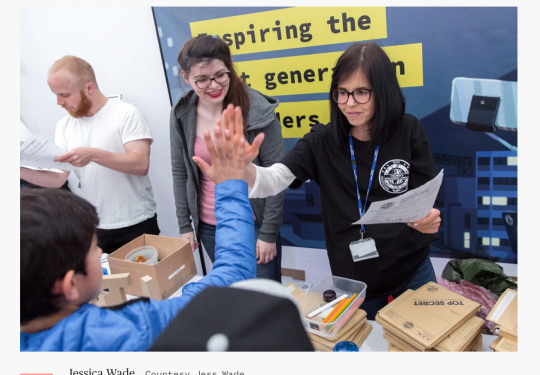
Meanwhile, Wade’s own Wikipedia entry — written by others, not her — has grown to 10 printed pages.
As Wade pursues her effort to make sure women scientists are known, she also has beliefs on how to make sure the next generation gets the support they need.
She said girls don’t need “whiz-bang” experiments at school assemblies: visiting scientists do their show, pack up, depart and nothing changes. Instead, girls and students of color need to be coached and mentored on what to study, and when.
“People assume girls don’t choose science because they’re not inspired,” Wade, 33, said in a recent interview. “Girls are already interested. It’s more about making students aware of the different careers in science and getting parents and teachers on board.”
Women make up only 28 percent of the U.S. work force in STEM, according to the American Association of University Women, and only one in five current engineering or computer science majors are women. Women in STEM earn $60,000 a year, compared to $85,000 for men, according to the American Association of University Women, a non-profit organization that focuses on equity for women.
“Ultimately, we don’t only need to increase the number of girls choosing science, we need to increase the proportion of women who stay in science,” said Wade, whose doctorate research at Imperial College in London has been widely cited for advances in digital display technology for TV, computer and phone screens.
One key, she said, is better high school science teachers. “We’re suffering a huge shortage of skills-specialist science teachers across the U.S. and the U.K.,” she said.
Wade said schools should make it easier for girls and students of color to apply for admissions, grants, fellowships and promotions.
“What do you need to do? Who do you need to speak to? When do you need to make that application? Who should be your cheerleader or supporter?”
She believes schools need to be upfront about their policies on bullying and sexual harassment; universities must provide affordable child care on campus; and conference organizers should provide day care and grants for those with caring responsibilities.
Wade, who grew up the daughter of two physicians and had supportive teachers at private schools, realized at a young age that most people were not as lucky.
“I genuinely believe that science is better when it’s done by diverse teams,” she said.
“It’s also important because we’re designing new technologies or new scientific solutions to global problems, we want the teams of people creating them to reflect the societies that they’re serving.”
“Even if you don’t care about any of that, the world desperately needs more scientists and engineers,” Wade added. “Science can help solve the world’s biggest challenges — climate change, antibiotic resistance, emerging pandemic-inducing viruses.”
Looking back on her inclusion in the late Queen Elizabeth’s 2019 Birthday Honours list, Wade hopes young women scientists will become commonplace at future ceremonies.
And she hopes they will enjoy it as much as she did.
“It was pretty wild to be honored by the royal family,” Wade recalled. She didn’t meet the queen, but she did take along her mother, Dr. Charlotte Feinmann, to Buckingham Palace.
Her father, Dr. John Wade, couldn’t attend, but Jess Wade did her best to make it up to him.
“I took a Tupperware,” she confided, “to sneak some royal sandwiches home to my dad.”
129 notes
·
View notes
Note
Hi! Once you get this, please tell us 5 things you like about yourself. If you've received that already, don't mind skipping the message. You can post it to five other people you follow for them to respond :)
👀
Hello @certifieddilfenjoyer ! 🫡 Thank you for this, I usually don’t do these types of asks but you’re amazing so why the hell not!
Here we goooooo:
1) My sense of humour. I think I’m pretty funny 🤣 Sometimes. My heroes are people like Conan O’ Brien and Larry David. My humour has taught me not to take life too seriously. I like to make people laugh and feel good, so there’s nothing that brings me joy than seeing a smile or sensible chuckle from anyone lol. I will accept a “LMAO” too. 😅
2) Learning to love myself from the inside out. All my anxieties and depression and accepting every quirk and flaw I HATED when I was younger, and understanding that they make me unique. Also learning to love myself when I look in the mirror every day — I’m only going to be 32 once, and in honour of one of my favourite quotes: “I will never have this version of me again, let me slow down and be with her.” ✨
I also had a health scare in late 2020, (lmao time of my life) so just valuing being alive, and taking one day at time.
3) My writing. Really proud of some of the things I’ve started writing again since getting back into fan fiction. Thanks Raphael! 😈✨I wanted to do nothing but be a writer when I was a child but for some reason I stopped when life got in the way or when I had other hobbies and pursuits. So I’m just gosh darn happy to be here, writing again, and maybe I’ll get a book idea out of this. Maybe not! Or a film idea?! Who the hell knows! Even if it’s nothing I’ll be happy — my fan fic ain’t stopping!
4) Where I’ve come from and my career. I’m originally from America and now I live in the U.K. — I’ve been here for 5 years now and fully settled which means I can apply for dual citizenship this year. (Or when I have an extra £1500 lying around lmao, in this economy?! 😐). I always wanted to travel and live abroad but could never afford it growing up. So it blows my mind I’m here now. 😂 I also work in animation — the industry that took me away from my writing dreams! Lol! When I take a moment to step away from my computer or crippling to-do list, it’s actually pretty damn cool how far I’ve come, haha.
5) My style and range of tastes in film, music, books, obsession with Japanese culture, anime, etc., etc., I’m so weird!!! And I love it! I am obsessed with old films and have been in love with various dead men and women through out my entire life, lol. Ask me about William Powell or Katharine Hepburn, I’ll talk your ears off. I also love all types of music from Japanese Jazz, City Pop, Swing Bands like Glenn Miller, to melodic techno and hip hop like A Tribe Called Quest. Also my favourite band of all time is HAIM. 🤣
Thanks again for sending this to me — now back to obsession about Raphael. 😏✨🪦
4 notes
·
View notes
Text
We are the News
The news feed today on YouTube: Michael Mosley has gone missing. 6 times over from various news sources. I have never heard, seen or even had the scent of this man. To me, he is a complete stranger. To some he may be important, but this search (in my opinion) seems over covered. Now, this doesn't mean that I hope this man isn't found and it also doesn't mean I don't think the coverage is justified. I think in a different climate, this would be news.
The issue I have is the lack of news. The lack of news on the upcoming general election. The lack of news on Rishi Sunak's recent lie. Not to mention him leaving early during a D-day memorial (which people take very seriously here). The lack of coverage on the Palestine conflict. The lack of coverage on the declaration from the U.N. The increased coverage of Farage's milkshake incident and his "Reform Party". Which is just a company mind you, with barely any actual swing. The lack of coverage on other parties besides labour and conservatives (and reform), despite some parties holding nearly more seats nowadays. (And if we're counting reform as news then why is the Green party never on the news? Or even the Lib Dems for that matter).
It's a clear conflict of interest for most mainstream British news sources. Especially which ones are presented on youtube (or the unfiltered web, as I don't watch the news on youtube. To be frank, if they did care about what I'd watched for my news recommendations, then I wouldn't get GBnews and The Sun). Who has leeway in these spaces? Who controls most media companies within the U.K? Why don't we see the above issues? Where is the news?
It's here. Right in front of you. On your monitor, screen or even possibly your T.V. I am the news, you are the news, the internet is the news. You just have to find it.
The people who own the media companies like The sun, gbnews and sky (there are many more), don't want you to worry about the upcoming general election, the Green and Lib Dem parties, the Palestine conflict, the student sit ins and protests. (Notice how most haven't reported on most student protests but reported on robinson's hate protest). They want to shine the light on people like Farage, random events like the disappearance of Michael Mosley and they want you to think there's only two parties worth voting for. They want to keep the country the way it's going.
America set the blueprint, we're just following the mark.
Luckily, we don't have to follow in their footsteps. Luckily, we are the news. The internet is a space that's near untouchable for these news companies. They can report, they can be followed and they can be subscribed to. They can put out a video every 20 minutes detailing smokescreens and flashy mirrors. The people can do the same. It has been proven with Palestine. People will become journalists because people need to be journalists. People who are living in Gaza are reporting the horrific things that are happening there. The mistreatment, the war crimes, the pride of the Zionists. It is admirable and it has lead to worldwide constant coverage. All eyes are on Palestine.
It can and must be done again. The news can be liberated, even where it seems impossible (I'd argue that American's may even be in the process of this. A media liberation). Make a blog, an Instagram page, a Tiktok, a Facebook page. Post, report, document. Make a zine, a newsletter, anything. The coverage doesn't have to be owned by the same few companies. You can become that coverage and you can report what's important. Even if it's to your friends or your family. Spreading news can sometimes make a world of difference.
P.s. This also can apply to interests. This isn't limited to politics. Make a news page for something you love, anything will do.
#anarchist#news#journalism#politics#british news#palestine#anarchism#current events#from the river to the sea palestine will be free
2 notes
·
View notes
Text
I think I'm going to start referring to First Ladies Michelle Robinson and Melanija Knavs and see how people like it. I'm referring to the fact that media - especially U.S. media - have a fetish for referring to Catherine, Princess of Wales as Kate Middleton. U.K. media was just as bad until the Queen died and Kate was "promoted" and they finally seemed to realize calling Queen Camilla by the name Camilla Parker-Bowles was stupid and applied this same logic to Kate.
Back when Kate and William married it was announced that she would NOT be keeping her maiden name and would follow in the footsteps of countless other women and take her husband's surname. Once she announced this and took her vows it became inaccurate and disrespectful to continue to use the surname Middleton to refer to Kate.
This has nothing to do with one's stand on the monarchy or the idea of surname adoption on marriage. Many women choose to keep their maiden name after marriage, especially those in the public eye. Forget feminism, surname adoption is a giant pain in the ass for genealogists. And I know there are plenty of people who do not recognize the concept of "Prince", "King," "Princess", etc. All that is taken as a given. Media and others who choose not to recognize the monarchy can decide to use the person's non-royal title name (in her case, Kate Mountbatten-Windsor, and I think Kate Wales is OK too). But I saw a headline in Deadline this morning (U.S. media is notorious for doing this sort of thing to her) that referred to "Prince William and Kate Middleton" which is not only accurate, but it also diminishes Kate to a degree that rivals the old days when a married woman was identified as something like "Mrs. John Smith."
A weird rant for a Wednesday morning, but this has been bugging me for well over a decade.
2 notes
·
View notes
Text
Legislators in at least two U.S. states are citing a recent decision in England to restrict gender transitions for young people as support for their own related proposals.
They weren’t the first to turn to other countries, notably in Europe, for policy and research ideas. Lawmakers across the U.S., where at least 23 states now have tightened or removed access to transgender health care for minors, have routinely cited non-U.S. research or policies as justification for their legislation.
Yet leading health organizations in the United States and Europe continue to decisively endorse gender-affirming care for both transgender youths and adults.
Among other things, they argue that restrictions on things like hormone therapy tend to single out transgender youths, even though other young people also can benefit from them. And transgender advocates and allies see a political attempt to erase them, cloaked as concern for children.
Some information and perspectives on the global patchwork of health and public policies on gender-affirming care:WHAT DID ENGLAND CHANGE AND WHY?
England, through rules put forth by its public health system, is limiting the ability of people younger than 16 to begin a medical gender transition.
The National Health Service England recently cemented a policy first issued on an interim basis almost a year ago that sets a minimum age at which puberty blockers can be started, along with other requirements. NHS England says there is not enough evidence about their long-term effects, including “sexual, cognitive or broader developmental outcomes.”
Starting April 1, NHS England will not prescribe puberty blockers — drugs that suppress sex hormones during puberty — as a “routine treatment” to children and other young people seeking gender transitions. In practice, the decision also applies to Wales, which does not have any NHS gender clinics for children. Northern Ireland says it will adopt England's policy; Scotland is weighing it.
But it's not a blanket, nationwide restriction. NHS England is just one health provider in the country, albeit a major one.
Puberty blockers are available for a cost at a few private clinics. And young people already taking them through the NHS — fewer than 100 in England, according to the BBC — can continue. The drugs will also be available to participants in clinical trials.
Britain’s Conservative government, which has been broadly critical of youth gender transitions, welcomed the NHS England decision. Even so, a proposal in Parliament to flatly make it illegal to provide puberty blockers to those under 16 is unlikely to become law.
The use of puberty blockers is not limited to gender transitions, but they can be an early step in one. They can pause puberty for gender-questioning youths until they are old enough to decide, after discussions with their families and health providers, on treatments that bring more-permanent changes.WHAT ARE US LEGISLATORS SAYING?
U.S. legislators and statehouse bills seeking to restrict transgender health care have often cited European science and policy, from countries including Finland, France, Sweden and Norway, as well as the U.K.
In Kansas, state Sen. Beverly Gossage cited England’s new policy last week when briefing fellow Republicans on a bill that would ban gender-affirming care for minors.
“In England, they’ve declared that there could be no gender-affirming care other than therapy for children because the scientific proof is not there,” Gossage said in comments that mischaracterized the NHS England guidelines. They do call for starting with counseling, as do those of other leading health organizations.
Republican leaders expect the ban to pass this week and hope they can override any veto by Gov. Laura Kelly, a Democrat.
In Georgia, Republican state Sen. Ben Watson pointed to Europe as he pushed a ban on gender-affirming care for children: “In light of the information and what’s been going on, not only in Europe, in the U.K., but here in the United States, this is the change that I’m proposing.”‘DEEP CONCERNS ABOUT HOSTILITY AND HARM’
Puberty blockers for adolescents who meet certain criteria are endorsed by major U.S. medical groups, along with the World Professional Association for Transgender Health, when administered properly. Those criteria include no age requirement.
“Puberty blockers have been prescribed for more than 40 years for safe and effective treatment of medical conditions including early puberty. The fact that NHS England is targeting only trans and gender diverse youth with this policy raises deep concerns about hostility and harm to LGTBQ+ people and their families," WPATH and the European Association for Transgender Health said in a statement last week.
“Decisions about healthcare must be driven by clinical evidence, not by politics," the statement continued. "The NHS has provided no indication what criteria it will use to monitor the harm its decision may cause, putting youth and families at enormous risk for no legitimate medical purpose.”
Last year, the American Academy of Pediatrics, which represents 67,000 pediatricians, unanimously voted to reaffirm its pro-stance on gender-affirming care for transgender children, including hormone treatments when appropriate.
Iridescent Riffel, a 27-year-old transgender woman and activist from Lawrence, Kansas, said she views the English policy as too conservative.
Puberty blockers help prevent people from developing physical features not in line with their gender identity, such as beards or breasts. For most teenagers, puberty is well underway or nearly complete by age 16. Treatments to alter physical features later in life to align with one’s identity can be costly and painful.
Transgender youths may find it harder to begin the process of social transitioning — or how a trans person changes how they present themselves to other people — once they start puberty, she said.
“It’s not just, ‘Oh, I’m uncomfortable with my body.’ It’s, ‘How are people perceiving me? Am I going to get judged? Are people going to judge me? Am I going to be unsafe for going out this way?’” she said.
A ban on gender-affirming care isn’t the true goal, Riffel said. Instead, it’s, “We just don’t want to see trans people in public life at all.”
4 notes
·
View notes
Text
In the days leading up to the Oct. 20 release of Martin Scorsese’s Killers of the Flower Moon, The Lyric cinema in Fort Collins, Colorado, fielded some unusual calls from customers. They all wanted to know if the Western crime epic, which runs three hours and 26 minutes, would have an intermission. And, if not, could one be added?
The art house cinema obliged and inserted an eight-minute break. It wasn’t long before a customer’s photo of an ad highlighting the intermission went viral and The Lyric received a call from Paramount, which is distributing the film, saying it had violated the booking contract and fines could be levied. “We didn’t know we had done anything wrong,” says Lyric manager Aaron Varnell, who recently added “chaos cultivator” to his title in a nod to challenging times.
In Long Beach, California, the Art Theatre — a single-screen theater built in 1925 — likewise hoped an intermission would lure more customers to see Killers of the Flower Moon on the big screen, versus waiting 45 days to watch it on Apple TV+. “Our thinking was, we can really make this an event,” says Kerstin Kansteiner, who heads the board of the nonprofit theater. “It gives folks the opportunity to use the restroom, and it could also make for extra concession sales, which is literally how we pay our bills these days.”
The idea was abandoned when the Art’s film booker reached out to Paramount before the film opened and was told an intermission wasn’t allowed. “It was disappointing,” says Kansteiner. “We understand that directors have a vision and don’t want to take the viewer out of the film, but it’s problematic if you make a film that’s three hours and 26 minutes long.” Because the Art has only one screen, the second evening showing didn’t begin until around 9 p.m., with the daunting prospect of a 12:30 a.m. finish.
Cinemas that survived the pandemic are still trying to find their footing during the streaming boom; as much as 15 percent of the moviegoing population hasn’t yet returned to theaters, according to data collected by Hollywood studios. This applies especially to older adults, the target audience for Killers of the Flower Moon and Christopher Nolan’s Oppenheimer, which runs three hours. These longer films mean fewer showtimes, too, which compounds concerns for cinemas when it comes to ticket sales.
According to the film website What to Watch, the average length of the top 10 movies in 2022 was two hours and 21 minutes, compared to one hour and 50 minutes in 1981. While it’s true that three of the four top-grossing movies of all time at the global box office — Avengers: Endgame, Avatar: The Way of Water and Titanic — run longer than three hours, Vue Cinemas head Tim Richards says that doesn’t mean customers shouldn’t have options.
So Richards engineered a test in which Vue offered its U.K. customers the choice to see Killers of the Flower Moon in one interrupted viewing or with a 15-minute intermission (in Europe they’re known as “intervals” or “comfort breaks”).
“Scorsese is one of the greatest directors of all time, with an extraordinary film, and we didn’t want to alienate any of our customers because of the running time. It is the first time we’ve had an interval in decades,” Richards says. “Right off the bat, 30 percent of our customers chose to watch the movie with an interval even if it meant staying longer. And 85 percent said they would absolutely come back and watch a movie with an interval.” Vue was also asked to cease the breaks, but no fines were issued. (Scorsese, Apple and Paramount haven’t commented since the cinemas were asked to end intermissions.)
Late last year, some theaters had reached out about including an intermission with 20th Century’s Avatar: The Way of Water (three hours and 12 minutes) and said they were told no per the wishes of James Cameron, according to exhibition sources. “Imagine being immersed in the world of Avatar and having a sudden break. It would be hard to get back into the movie,” says one Hollywood studio executive not affiliated with the film. “But I get the frustration with these longer movies on the part of exhibitors.”
Richards and the other cinema operators THR spoke with say any film longer than two hours and 30 minutes might benefit from a break. That would include a slew of recent titles, including Ridley Scott’s new epic, Napoleon.
There’s evidence to back up the theory that intermissions could boost grosses for all involved. The Lyric saw a bigger turnout than usual on the second weekend of Killers of the Flower Moon — before word got out there were no more breaks during the film. Adds Varnell, “People said after, ‘I just kept waiting for the intermission. I really needed to pee.’”
3 notes
·
View notes
Text
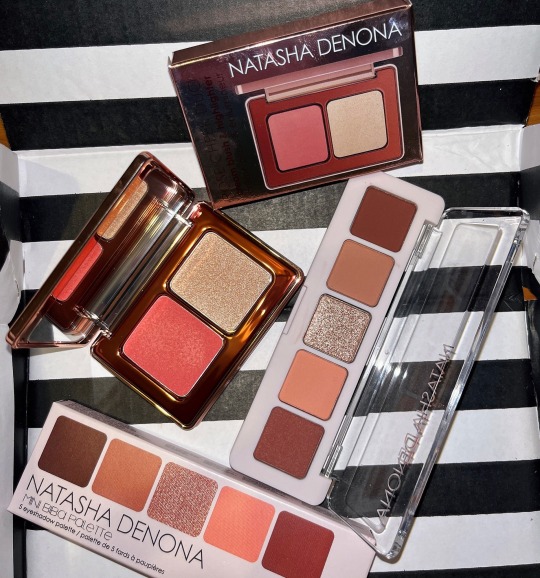
Hi guys,
One of the blessings of having Sephora in the U.K is now I can see all the brands we couldn't get (easily) in person and one brand I have wanted to try is Natasha Denona. I have seen so many tutorials over the years of people using her palettes so I was so excited to finally try some products myself!
The first product I picked up is for my facebase , Natasha Denona Rose Cheek Duo , £16.90. This duo set comes with a cream blush in a beautiful coral shade. The formula is lovely because it starts like a cream and then dries into a powder-soft finish on your face. It also comes with a gorgeous intense powder highlight formulated with a unique silky-soft formula made out of milled chroma crystals & luxurious crushed pearls to give all skin tones a sheer, radiant glass-like strobe. I love the formulas because you can build them to get a pigmented look or apply with a light hand for a flush of colour.
I couldn't not pick up a eyeshadow palette so I decided to dip my feet in and get the Natasha Denona Mini Biba , £24.00. This palette is inspired by the original 15 pan eyeshadow palette has 5 new shades featuring nudes & brown shades with neutral rosy undertones. It's the perfect palette for travelling and is honestly one of the most pigmented palettes I have ever used.
Shades included:
BRUNO – 417CM - deep mahogany brown
IZZY – 418CM - nude dusty rose
BLAZE NUDE – 419M - light rosy nude
PLUSH – 420CM - light medium dusty coral
WINK – 421CP - medium dusty coral brown
Personally I am loving these products because they are so pigmented and easy to work with. I get why the brand has so much hype behind it, testing the palette for the first time it blew my mind how pigmented the shades were. I also loved how the blush and highlight wore throughout the day, it lasted all day and gave me a lovely radiant finish all day.
As always all products mentioned in my blog post are linked above!
Lots of love
Bella x x
#natasha denona#MUA#makeup review#blogger#blog#beauty review#grwm#makeup#beauty#make up#photography#cosmetics#makeup blogger#me#my photography#makeup look#girl#new makeup#lifestyle#lifestyle blog#lifestyle blogger#beauty blogger#makeup favourites#beauty favourites#makeup haul#eyeshadow palette#eyeshadow#cream blush
8 notes
·
View notes